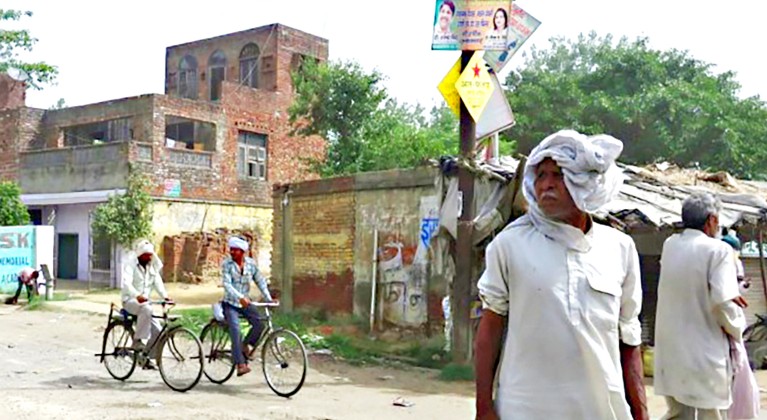
Several regions in India regularly face daily maximum wet-bulb temperatures surpassing 30°C. Credit: Subhra Priyadarshini
High temperatures have set in earlier than usual in India this season. This period of abnormal heat historically occurs in the summer (April-May), but longer and more severe heatwaves, along with higher humidity, are testing human endurance.
Climate change will bring more severe humid heat events, particularly challenging outdoor workers. A recent review1 shows that 1°C of additional warming, heat, and humidity, will hinder the ability of one in eight people living in the tropics to safely work outside during most daylight hours.
High humid heat conditions in India primarily occur during the summer in the coastal areas. However, much of the country faces high-humid heat during the summer monsoon (June-September). Moisture availability over land and in the atmosphere raises the humidity in the early to mid-summer monsoon. Both dry and humid heat can create heat stress by pushing up the human body's core temperature beyond the thermal comfort limit. Heatwaves with high humidity can be more dangerous because the air cannot efficiently absorb excess moisture, restraining heat exchange, through sweating, between the human body and surroundings.
High humid heat in Uttar Pradesh and Bihar killed several people in June 2023. While heatwaves during the summer are well studied in India, and we know their health risks, humid heat events can also thwart labour productivity, and affect the economy. But they draw less attention.
For instance, a wet-bulb temperature — a measure of heat that considers dry air temperature and humidity — of 35°C marks the heat stress tolerance limit. Much lower values can cause serious human health and productivity-related issues. Laboratory studies showed that mild heat stress (18°C, wet-bulb globe temperature) reduces physical work capacity by 10% while the capacity goes down by 78% with extreme heat (40°C).
Several regions in India regularly face daily maximum wet-bulb temperatures surpassing 30°C — a serious concern for approximately three-quarters of India’s workforce engaged in ‘heat-exposed’ sectors such as agriculture, construction, fisheries, tourism and forestry, which contribute to about half of the country’s GDP.
Exceeding 1.5°C warming above pre-industrial levels will cause around 50 annual hours with dangerous humid heat, which could rise to more than 180 annual hot hours in parts of India , if it rises above 3°C from pre-industrial levels.
The Indo-Gangetic Plain, western India, and eastern coastal India are at the highest humid heat risk.
Given the exposure, vulnerability, and frequency of dry and humid heat events, we must focus urgently on adapting and mitigating heat stress. Most outdoor work-related activities (other than agriculture and fisheries) occur in urban areas, which are rapidly growing in India. More than one-third of India’s total population lives in cities, which is projected to be more than half by 2050. Urbanization can contribute significantly to a rise in temperatures that in tandem with high humidity, can create highly humid heat conditions.
There is a need to reduce the urban heat island effect through proper planning and integrating green spaces and water bodies into city development.
Effective adaptation to heat stress needs dedicated and focused interventions at all levels, including government, municipalities, communities, employers, and individuals. Early warning systems for both dry and humid heat play a tremendous role in reducing the adverse impacts. Deaths from dry heatwaves have decreased considerably in India, primarily due to early warning and government awareness campaigns.
Several cities like Ahmedabad and states like Maharashtra, Delhi, and Uttar Pradesh have drawn up heat action plans that have been effective and must be replicated. Adequate early warning informs about the potential risks of high heat stress, which can help outdoor workers reduce physical activities. Shifting working hours during high dry and humid heat is also effective. Agricultural workers can be more active in the early morning and late evening hours in summer, while construction activities can shift to the night.
Municipalities and industries can create more green spaces, water bodies, and cooling shelters and stations for outdoor workers to cool off. Mandatory rest breaks make it easier for labourers. This adaptation and resiliency component is critical since one of the main factors exacerbating risks for such workers in tropical regions is the limited ability to adapt due to insufficient infrastructure development, and lack of robust labour regulations.
